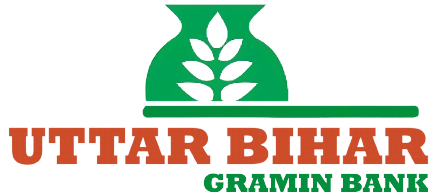Bihar Gramin Bank’s implementation of the PMAY-CLSS (Credit Linked Subsidy Scheme) makes buying or building a first home cheaper for low-income families. It does this by giving an upfront subsidy on the housing loan. Below I explain who can get it, where it applies, what costs are covered, how the subsidy is calculated, and the documents and process you will need. I use specific examples so you can see the real savings and steps.
Who qualifies
Income bands (EWS / LIG). To qualify under the EWS/LIG part of CLSS a household’s annual income must fall in these ranges:
- EWS: Up to ₹3 lakh per annum.
- LIG: Above ₹3 lakh and up to ₹6 lakh per annum.
No pucca house rule. The family must not own a pucca (permanent) house anywhere in India. This is why the scheme targets first-time home beneficiaries. A pucca house generally means a house with permanent walls and roof (masonry or RCC). If you only own a kutcha or temporary structure, you can still qualify.
Other practical points. The applicant must be an Indian citizen and must meet the bank’s basic credit criteria (age, repayment capacity, credit history). Women can be primary or co-applicants; many banks give preference to female ownership under PMAY.
Where it applies
Geography. PMAY-CLSS is a central scheme available across India. Bihar Gramin Bank applies the subsidy for eligible borrowers within its operational area in Bihar. Your property should be in the bank’s lending zone and conform to local regulations.
Property type. The scheme covers purchase or construction of a new house, and in many cases enhancement/extension (for example, adding a room or finishing an incomplete structure). The exact eligible actions depend on bank policy and the category (EWS/LIG).
What expenses are covered
- Purchase of a new flat/house. Loan used to buy a completed or under-construction unit.
- Construction on own land. Building a new dwelling on land you already own.
- Enhancement/extension. Improvements that increase liveable area or make a temporary house pucca (subject to bank approval).
- Associated costs. Some banks permit part of the loan for basic finishing work, but major renovation or commercial works are not covered.
Max loan & subsidy math
Subsidy rate and cap. For EWS/LIG the CLSS subsidy is 6.5% on the eligible loan amount. The subsidy calculation uses a maximum eligible loan amount of ₹6 lakh for subsidy purposes. The government converts the interest subsidy into a one-time upfront amount and credits it to the loan account.
Example — simple numbers. Suppose you take a housing loan of ₹6 lakh for 20 years and qualify as LIG. The government provides a one-time subsidy that reduces your effective loan principal. In practice the maximum upfront subsidy for EWS/LIG works out to roughly ₹2.5–2.7 lakh (this is the present value of the 6.5% benefit over the tenure as converted under scheme rules). That lowers your outstanding balance and your monthly EMI by a significant amount.
Important note. The actual subsidy credited depends on the exact loan amount, disbursement schedule, loan tenure, and the discounting methodology the government uses. Bihar Gramin Bank will compute the final subsidy and show the post-subsidy EMI when your loan is processed.
Family definition & affidavit
Who counts as family. For PMAY the family normally includes the applicant, spouse, and unmarried children. If parents or other dependents are co-applicants, their incomes are summed for eligibility.
Affidavit / self-declaration. You must submit a declaration (and sometimes an affidavit) that no family member owns a pucca house in India. This is a legal declaration that the bank will file with your loan. Provide accurate information — false declarations can lead to recovery action or subsidy reversal.
Disbursement in stages
Purchase: For ready-to-move-in houses, the bank typically disburses the loan in one tranche to the seller or as agreed in the sale deed. For under-construction flats, disbursement usually follows the builder’s stage completion certificates.
Construction on own land: The bank releases funds in stages. Typical stages are foundation, plinth, walls/roof, finishing. Each stage needs a progress certificate and bills/reports from a civil engineer or architect approved by the bank.
Why staged release matters. Staged disbursement reduces risk for the bank and ensures funds are used for the stated construction. It also affects the subsidy, because the subsidy is calculated on the eligible loan disbursed and outstanding at the time of subsidy claim.
Margin rules
What margin means. Margin is the down payment you must bring before the bank lends. Commonly called borrower’s contribution.
Typical ranges. For EWS/LIG borrowers banks often offer concessional margins. You can expect margins between 5% and 15% of the property cost depending on the bank policy and whether the property is under construction or ready. For example, on a ₹6 lakh house, a 10% margin means you must contribute ₹60,000 upfront. The subsidy reduces the loan principal after sanction, but the initial margin still must be arranged.
Check with your branch. Bihar Gramin Bank will confirm the exact margin, any processing fee, and whether the bank allows subsidy to be used to reduce margin or not (usually it is adjusted against the loan account, not paid to the borrower).
Documents checklist
- Application form (bank’s format) with photograph.
- Identity proof: Aadhaar, PAN or voter ID.
- Address proof: Aadhaar, utility bills, ration card.
- Income proof: salary slips (last 3 months) or ITR/IT papers for self-employed; or income certificate for rural incomes.
- Bank statements: last 6 months.
- Property documents: sale agreement, title deed, building plan, NOC from local body (if applicable).
- Cost estimate and builder’s certificate (for under-construction projects) or contractor bills (for own construction).
- Affidavit / declaration of no pucca house anywhere.
- Passport-size photos and KYC of co-applicant(s).
FAQs
Q: If I own a kutcha house, can I apply?
A: Yes. Owning a kutcha (temporary) house does not disqualify you. The ban applies to owning a pucca house.
Q: Who receives the subsidy — me or the bank?
A: The subsidy is credited directly to the bank loan account as an upfront amount. It reduces your outstanding principal and EMIs.
Q: Can I get CLSS for an already built home?
A: You can get subsidy for purchase of a ready house or under-construction property, provided you meet eligibility and the property is the first pucca home for your family.
Q: Does the subsidy let me borrow more than ₹6 lakh?
A: You can borrow more than ₹6 lakh from the bank. However, subsidy calculation for EWS/LIG uses the cap of ₹6 lakh as the eligible amount for the subsidy benefit.
Q: How long does subsidy credit take?
A: It varies. After loan sanction and disbursement stages are complete, the bank applies for subsidy and the central agency processes it. Expect several weeks, but check with your Bihar Gramin Bank branch for an estimated timeline.
If you are considering a home loan under Bihar Gramin Bank’s PMAY-CLSS, visit your branch with the documents above. Ask for a subsidy illustration: a simple table showing loan amount, subsidy credited, and final EMI. That gives you a clear, numbers-based view of how much the scheme will save you.

Kritti Kumari is a banker and MBA graduate who writes about banking, finance, and customer-friendly services. She simplifies complex financial products into easy guides, helping readers understand Bihar Gramin Bank’s offerings and make smarter money decisions.

